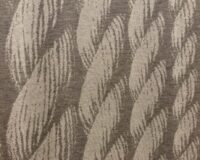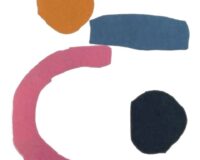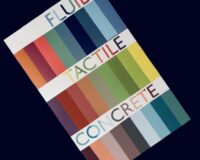Is a future of biomaterials possible? Among some investigations I highlighted ‘Human Material Loop’. The search for new bio-based materials is a central theme for the ecological transition as is their accessibility: an important aspect is the scalability of production processes, the possibility of quickly responding to market demands with economical solutions with low environmental impact…Currently in the final stages of process research, development and scalability, Human Material Loop has developed a plug-in technology that uses waste keratin protein fiber (the same as wool) and which can be integrated into existing machinery within the textile industry. The company also designed an environmentally friendly chemical process to convert the fibers into a form that can be used by this technology.’ Link:https://www.internimagazine.it/design/materiali/da-biomateriali-a-materiali-biofabbricati-un-identikit/ ’References taken from 📕 ‘The grammar of fabrics’ NEW FIBERS SUSTAINABLE in their nature and potential. We must protect against devastation without respect and ethical sense and adapt sustainability to the changing context. LANITAL, protein fiber created from the need to build fibers similar to wool. With the regeneration of cellulose it was possible to imitate silk and cotton. Lanital is an artificial fiber made with milk production waste, casein (the main protein). It was created during World War II by the chemist Antonio Ferretti. It is a light, smooth, flowing fibre. Like wool it shares warmth and softness (it cannot be attacked by moths). Rediscovered for its hypoallergenic qualities, it has antibacterial properties and breathable capabilities. Produced in Italy by SNIA Viscosa. CORN FIBER,🌽 offers comfort and feel typical of natural fibers with a cost similar to synthetic ones. It is obtained from the polymerization of polylactic acid, deriving from the fermentation of corn starch (with grinding of the cobs and formation of resin composed of polymers). It naturally degrades into water and carbon dioxide and can be recycled. Fabrics made with this fiber do not felt, are resistant to UV rays and easy to remove stains. They are also breathable, antibacterial and do not absorb odors. SEACELL is born from the combination of a cellulose fiber and the beneficial action of marine algae. It is a natural fabric, obtained from the processing of a brown algae from Northern Europe, ‘Ascophyllum nodosum’ known as ‘kelp’ (it grows among the fjords of Iceland). In contact with the humidity of the epidermis it releases its benefits: it remineralises the skin, works as an anti-inflammatory and acts as a shield from UV rays. It can be defined as a “wearable medicine”. CRABYON, is a recent fiber created by the Japanese company Omiken-shi in Osaka. Its production process involves crushing crustacean shells from the food industry and mixing them with cellulose extracted from beech and eucalyptus, without the use of solvents. It is a safe fiber and its biocompatibility has been scientifically verified (used in the medical and pharmaceutical fields) with antibacterial, anti-allergic and biodegradable qualities. Its strong point is that its characteristics remain unchanged thanks to the chitin. In consistency and appearance it is similar to cotton and decomposes like a leaf. It stays fresh and prevents fabrics from absorbing bad odors, avoiding irritation on the skin. Excellent for sportswear. Continues |






